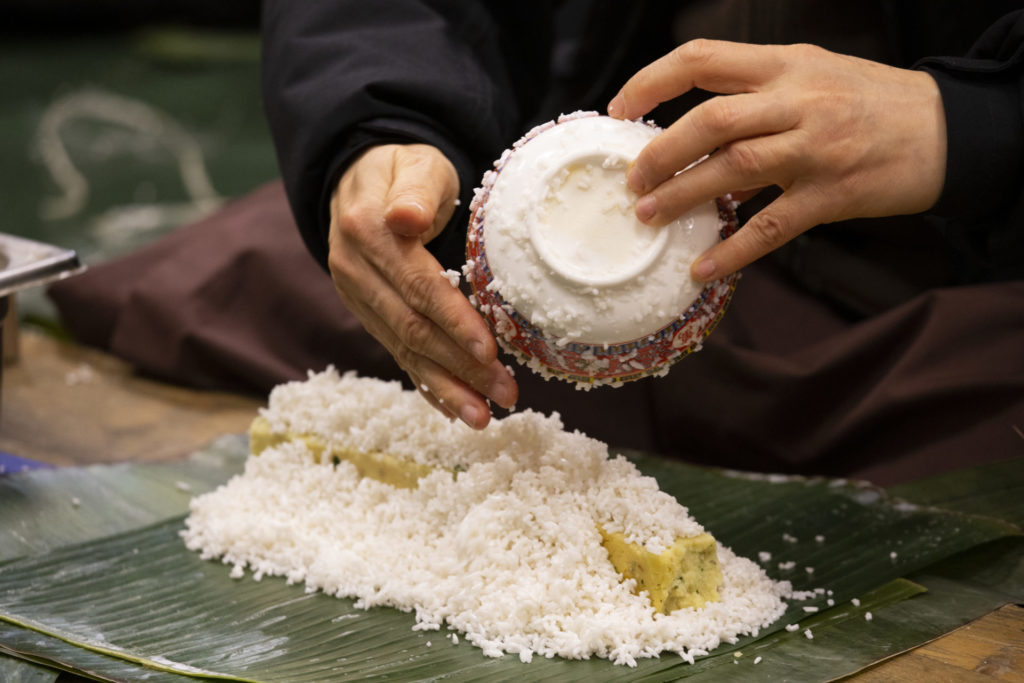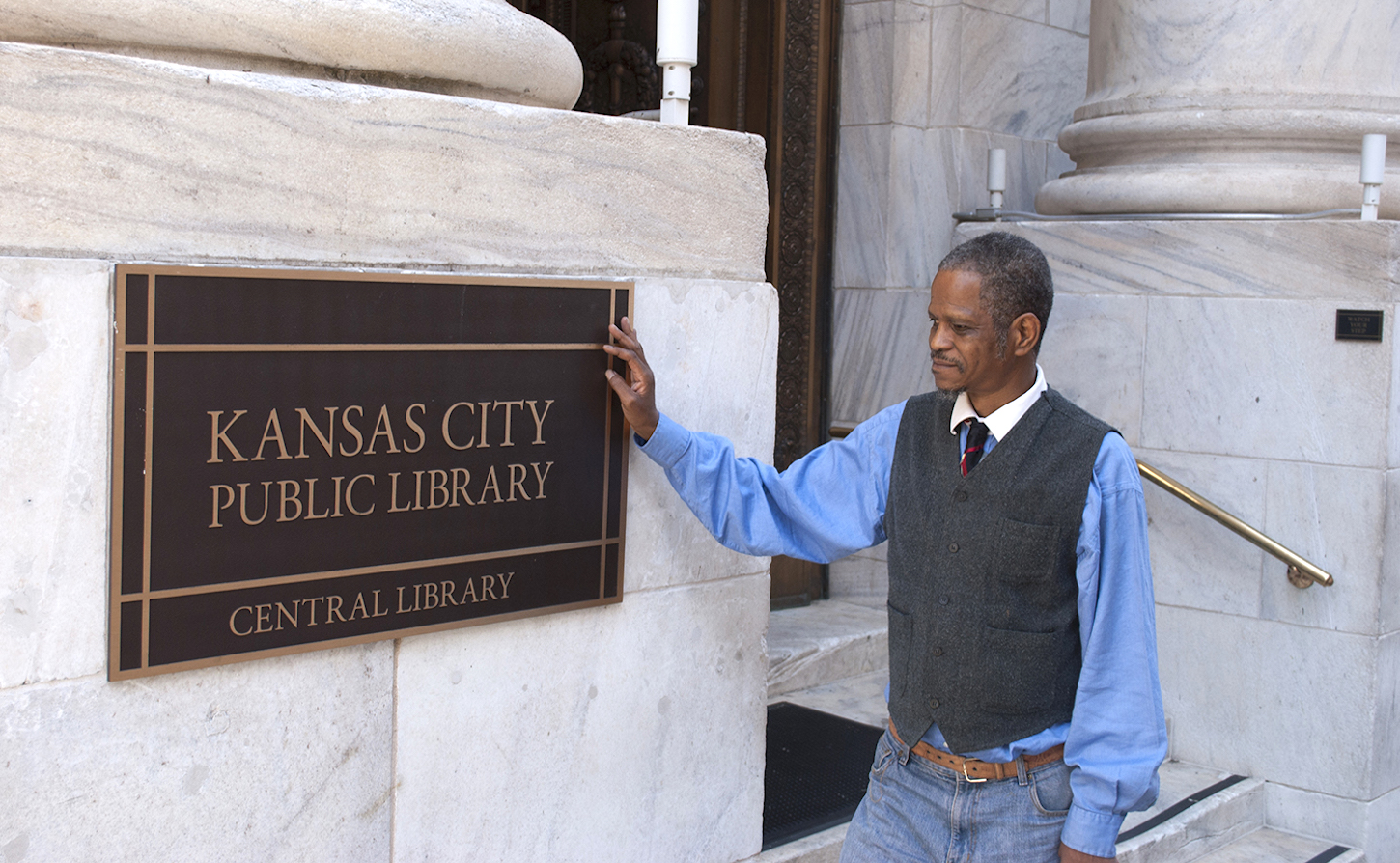In New Training Program, Naropa University Aims to Bring Mindfulness to Psychedelic-Assisted Therapy
With legalization for psychedelics on the horizon the Boulder, Colorado school launches a ten-month training program for aspiring psychedelic guides The post In New Training Program, Naropa University Aims to Bring Mindfulness to Psychedelic-Assisted Therapy appeared first on Tricycle:...

 (From left to right) Regina Smith, Tyler Norris, and Charles Lief speak at the Psychedelic-Assisted Therapies Certificate Program in-person week-long Opening Retreat. | Photo courtesy Naropa University
(From left to right) Regina Smith, Tyler Norris, and Charles Lief speak at the Psychedelic-Assisted Therapies Certificate Program in-person week-long Opening Retreat. | Photo courtesy Naropa UniversitySince its founding in 1974 by Chögyam Trungpa Rinpoche, Naropa University—previously The Naropa Institute—has been a beacon for Buddhist studies in the United States, attracting students and teachers from around the world. Now it’s aiming to become one of the leaders in the growing effort to train psychedelic therapists.
On March 14, Naropa launched its new Certificate in Psychedelic-Assisted Therapies program, a 200-hour training program that will unfold over the course of ten months in both an online and retreat-based setting. The course is being offered to “advanced professionals working in relevant therapeutic areas, including mental health counseling, psychiatry, chaplaincy and social work,” according to Naropa’s website. It’s a “non-degree Certificate,” which means it will provide foundational training without actually licensing participants to begin working with patients in a clinical setting.
Blending Buddhism, contemplative practices, Western psychotherapy, and an emphasis on ethics, inclusivity, and “Right Use of Power” (a guide to the ethical use of personal and professional power), the new program from Naropa appears to be well situated for the task at hand. In fact, many within the Naropa community have long been urging the university to become more involved in the burgeoning psychedelic space. “A lot of my colleagues and a lot of students have really been pushing Naropa to consider ways of doing more training in this area,” says Dr. Sara Lewis, co-director of the Naropa Center for Psychedelic Studies (NCPS), which will be spearheading the training program. “A huge number of our students are coming to train at Naropa. . . specifically because they want to do psychedelic-assisted therapy. So it was sort of natural, given Naropa’s history and mission and the things that we tend to be up to. . . that we would move into this training.”
The new training program is a collaboration with the San Jose, California-based Multidisciplinary Association for Psychedelic Studies, more commonly known as MAPS. In addition to being widely regarded as a leading organization in the modern psychedelic movement, MAPS also specializes in the training of psychedelic therapists. It’s also one of the leading funders of clinical trials involving psychedelics; and as it happens, in Boulder, not far from the Naropa campus, the organization is working on a phase III clinical trial (the final step before FDA approval) with 3,4-Methylenedioxymethamphetamine (MDMA) for the treatment of PTSD. The collaboration between MAPS and Naropa, says Dr. Jamie Beachy, another co-director at NCPS, “makes for a really beautiful partnership between people that are doing research in the field in a very relevant way and the training program.”
MDMA, thanks in large part to MAPS, could receive FDA approval for certain therapies as soon as next year. For that reason, Naropa’s new training program will focus largely on MDMA-assisted therapy, using the MAPS training model as its foundation. Fully half (100 hours) of the program will be focused on MDMA-assisted therapy, including a segment in which trainees will watch video footage from MDMA-assisted therapy sessions. Other, shorter segments of the program will be focused on psilocybin and ketamine. (Ketamine is an FDA-approved anesthetic; in 2019, the FDA approved a version of ketamine called esketamine for treatment-resistant depression.) But Beachy says there’s also an ethical reason for the program’s emphasis on MDMA-assisted therapy: “MDMA so clearly demonstrates potential for people with severe PTSD, [and] in the program we’re committed to offering training that has. . . potential to relieve human suffering. Really, that’s the guiding ethos for the program, [and] these therapies are demonstrating this incredible potential to relieve suffering.”
This isn’t the first time that MAPS and Naropa have collaborated. The two organizations also teamed up in 2020 to launch a course in MDMA-assisted psychotherapy, led by Marcela Ot’alora and Bruce Poulter, two therapists with long histories of working with psychedelics who are leading the MAPS phase III trial currently taking place in Boulder.
The new program arrives during a high point for the modern psychedelic movement. Over the past thirty-some years, a growing body of research has proven that some psychedelics—administered in the appropriate settings—can produce profound and enduring relief from a wide variety of debilitating conditions, including addiction, post-traumatic stress disorder (PTSD), depression, and the severe anxiety that can accompany a terminal diagnosis. Clinical trials have advanced rapidly, often with stunning results. One oft-cited 2016 study from researchers at the Johns Hopkins University School of Medicine, for example, found that “psilocybin produced large decreases in clinician- and self-rated measures of depressed mood and anxiety, along with increases in quality of life, life meaning, and optimism, and decreases in death anxiety” for patients with life-threatening cancer. The Hopkins researchers also note that after six months “these changes were sustained, with about 80 percent of participants continuing to show clinically significant decreases in depressed mood and anxiety.”
Oregon decriminalized psilocybin (the active ingredient in so-called magic mushrooms) in 2020, and states like Texas and Pennsylvania are already well along the path to making some psychedelic-assisted therapies available to some citizens. Psychedelic advocates don’t need rose-colored glasses to feel optimistic about the future.
And yet, the shadow of the past looms large. Most of the professionals working in this space today are keenly aware of the fact that our society has, to some extent, been down this road before. The first wave of psychedelic enthusiasm washed over our culture beginning in the mid-twentieth century after the synthesis and widespread distribution of “classic psychedelics” like LSD, psilocybin, and mescaline. That promising early era of research eventually fell under the shadow of the counterculture movement of the 1960s, which in turn led to full-scale moral panic and the prohibition of psychedelics. The field, promising though it may have looked at the outset, entered into a kind of “Dark Ages.” While enthusiasm right now is generally high, so too is a sense of caution. The modern psychedelic community is like a team of mountaineers trying to reach the peak of a mountain atop a sheet of unstable snow; one misstep—in the form of a highly publicized bad trip, say, or a new-age Timothy Leary—and the whole, fragile edifice could come avalanching down.
The training of psychedelic guides has become a key step toward ensuring that such a calamity never happens again. It isn’t easy to see successful outcomes as a psychedelic therapist. Psychedelics are notoriously mercurial—their effects can be mapped out and predicted to some degree, but at the end of the day there’s no telling exactly what’s going to happen over the course of a psychedelic-assisted therapy session, even after rigorous scientific controls have been applied. “I’ve done this work for over 20 years,” says Ot’alora, “and I’ll still be in a session with a participant where I’ll think, ‘Oh my gosh, I have never been in this position before, how do I hold this space? How do I keep this person safe?’ It’s always going to be something different, [because] everybody’s different.” So in some sense, the skillset of the psychedelic therapist must be as dynamic as the drug itself. She must be patient, empathetic, focused, and grounded. She must be willing and able to sit beside someone, often for many hours on end, as the patient vividly relives traumatic moments. She must also check her ego if and when her subject emerges from the psychedelic journey reporting a mystical-type experience. It can be easy to start mistaking one’s role as a therapist for the effects of the drug itself.
In a very real sense, psychedelic therapists are the gatekeepers to the profoundly transformative experiences that the drugs themselves can occasion; they serve as intermediaries between the scientists in the labs and the people who are seeking care. Proper training for therapists is arguably one of the best defenses against the onset of a second Dark Age for the psychedelic community.
 Charles Lief, the university’s president, speaks at the Psychedelic-Assisted Therapies Certificate Program in-person week-long Opening Retreat. | Photo courtesy Naropa University
Charles Lief, the university’s president, speaks at the Psychedelic-Assisted Therapies Certificate Program in-person week-long Opening Retreat. | Photo courtesy Naropa UniversityThe new training program from Naropa will apply “an explicitly feminist, anti-oppression, and social justice lens.” One of the goals of this approach, says Beachy, is to train therapists who have “deeply considered power dynamics and the risk involved with. . . the non-ordinary state experience [which] creates a lot of vulnerability in the therapeutic relationship.” Beachy and her colleagues have also designed the program with a reverential nod to the ancient roots of psychedelic healing rituals; they intend to honor “matrilineal traditions,” and they aim to focus “on indigenous rights and reciprocity, to really weave the conversation throughout the program with people who have thought deeply about this and [who] represent those communities.”
Mindfulness and contemplative training will also appear at various points throughout the ten-month program. “Naropa will weave contemplative practice throughout our training sessions in small and large groups, and trainees will complete a compassion meditation training led by Naropa’s Center for Contemplative Education (CACE),” says Dr. Beachy. “Contemplation is built into the core curriculum.” Introspection, according to Ot’alora, should be a key component in any therapist’s training: “You need to do your own work,” she says. “The way to not be afraid of someone’s suffering is to not be afraid of your own.”
As it looks toward the future, Naropa aims to become a force that will harmoniously connect the demands of the modern psychedelic industry with ancient wisdom. “With FDA approval in sight for some of these medicines… what’s happening is there are a lot of entrepreneurial interests [that] are creating trainings and programs and medicalizing substances and plant medicines. There’s a lot of interest in investment and capitalizing on this cultural emergence, or reemergence,” says Beachy. “Naropa, among other institutions, [has] a commitment to ethics, Right Use of Power, and relieving human suffering—and doing that in a way that’s equitable, rather than motivated by profit only. We feel that there’s a need for the kind of guidance we can provide in the world; guidance that’s rooted in mindfulness, and rooted in deep conversations about ethics and equity.”
♦

Get Daily Dharma in your email
Start your day with a fresh perspective

Explore timeless teachings through modern methods.
With Stephen Batchelor, Sharon Salzberg, Andrew Olendzki, and more
![]()
Thank you for subscribing to Tricycle! As a nonprofit, we depend on readers like you to keep Buddhist teachings and practices widely available.
This article is only for Subscribers!
Subscribe now to read this article and get immediate access to everything else.
Already a subscriber? Log in.

 BigThink
BigThink 
































.jpg&h=630&w=1200&q=100&v=f776164e2b&c=1)